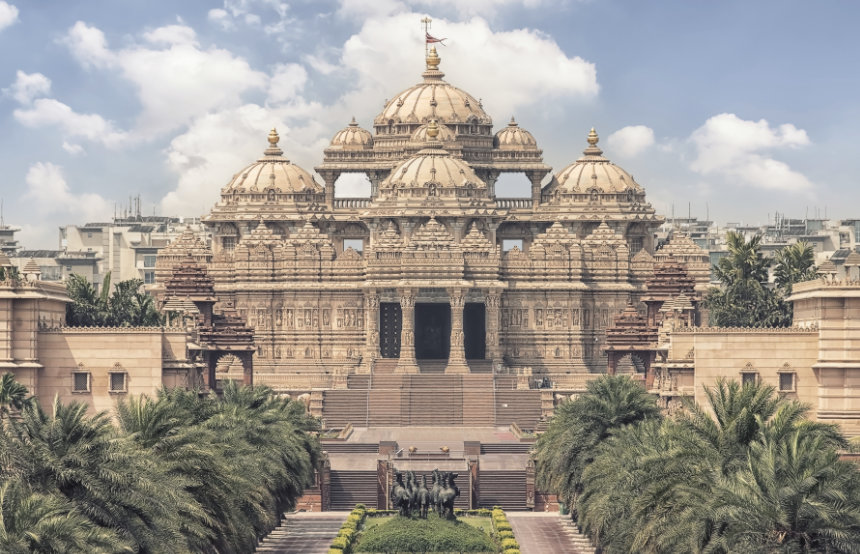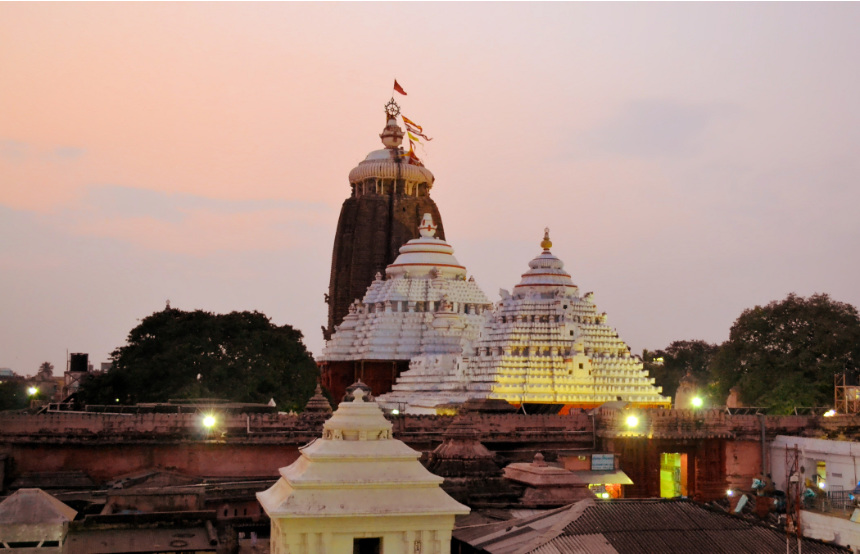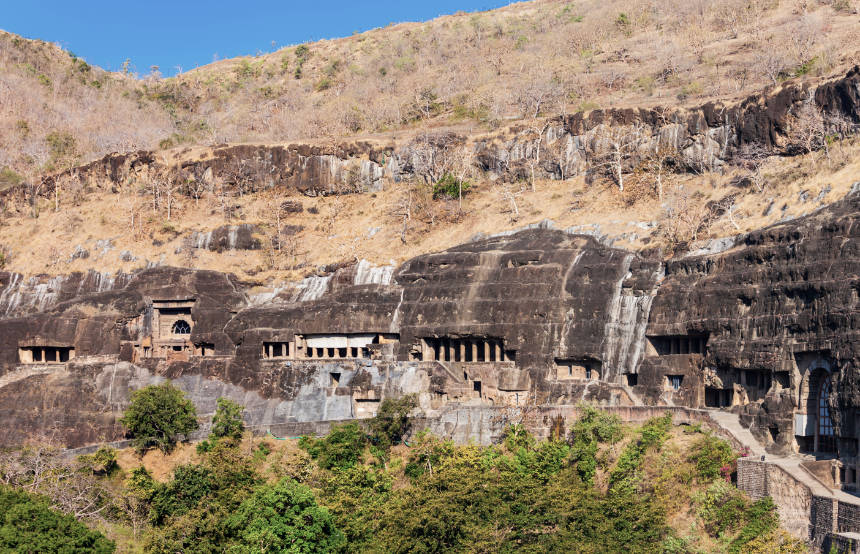The subcontinent of India is the birthplace of some of the oldest religions on Earth. The country, despite being legally secular, is deeply spiritual, and no visit would be complete without appreciating the extraordinary architectural and cultural wonders that the faithful have created. Religious sites in India are incredibly diverse, and there are many more than you could visit in a single trip; use this list of our top five religious sites to help you plan your trip to India.
- The Divine Reliefs of Swaminarayan Akshardham
- The Local Deity Honoured in the Hidimbi Devi Temple
- The Ancient Pilgrimage City of Puri
- The UNESCO Monuments of Sanchi
- The Ancient Art of the Ajanta Caves
The Divine Reliefs of Swaminarayan Akshardham
Inaugurated in 2005, Swaminarayan Akshardham is not as old as many other religious sites in India, but its impressive architecture was inspired by traditional religious buildings, and the mandovar (the exterior of the temple), is the largest and most intricately carved to be built in India in the last 800 years. This mandir (house of God and a place of worship for the Hindu religion) is a tribute to the historic figure of Bhagwan Swaminarayan, believed to be an incarnation of God. It consists of 234 pillars, nine ornate domes, 20 quadrangle spires and 20,000 statues of spiritual figures from Indian Hinduism, all intricately carved by volunteer devotees with reliefs based on deities and stories from the life of Bhagan Swaminarayan. Visitors can also enjoy a stroll in the open gardens and courtyard, as well as sating their curiosity through exhibitions on Hinduism and the life of Bhagan Swaminarayan.

The Local Deity Honoured in the Hidimbi Devi Temple
Also known as the Hadimba Temple, this ancient pagoda-style temple was built around a cave where Hidimbi Devi, a figure from the Indian legend Mahabharat, is said to have gone into meditation. The wife and mother of two figures in this tale, the people of Manali worship Hidimbi Devi as a deity, and her blessing is required for local ritual ceremonies. Located in a dense, lush forest at the base of the Himalayas, everything about this temple, from the natural surroundings to the detailed wood carvings on the walls, immerses you in the serenity of a place that has seen centuries of devotion. There are also activities for children, like leisurely yak rides.
The Ancient Pilgrimage City of Puri
A coastal city in eastern India, Puri is one of the four religious sites in India on the ‘Char Dam’ Hindu pilgrimage circuit. The star of the city is the 12th-century temple to Jagannath, which was historically invaded 18 times to plunder its treasures. Despite this violent history, it was never destroyed and can still be visited today, though only by Hindus; non-Hindus may view the temple from the roof of the nearby Raghunandan Library. The temple spire, at 190ft, is sure to be an impressive sight. Despite the exclusivity of this religious site, there are many other prominent temples in the city you can visit, as well as a museum, library, and local restaurants. Unlike Jagannath Temple, Gundicha Temple, at the other end of the Bada Danda (Grand Avenue) of Puri, is open to tourists. Visitors to the city are always welcome as it heavily relies on tourism.

The UNESCO Monuments of Sanchi
Buddhism, one of the religions that originated in India, may have spread to the rest of the world, but many of the key religious sites are still in India. Sanchi is home to one such group of Buddhist monuments, dating from the third to the fifth century BCE, considered to be among the best-preserved groups of Buddhist monuments in India. The Sanchi Stupa, the most historically significant and oldest in the complex, is depicted on the back of the Indian 200-rupee note, but the experience of seeing it in person is unmatched. The carvings on these ancient architectural marvels depict episodes from the life of the Buddha and are unmissable for those with an interest in the development of Buddhist-period architecture and relief carving. After the decline of Buddhism in India, the complex was abandoned, before it was documented by British Imperial forces in the 19th century. Its contemporary importance is reflected by its status as a UNESCO Heritage Site, a status it has held since 1989. Given the rich and complex history of the site, we recommend visiting with a guide for a private tour.
The Ancient Art of the Ajanta Caves
Peeking out of the side of a 246ft rock wall, the Ajanta Caves – arguably one of the most impressive religious sites in India – are a series of Buddhist cave monuments dating from the second century BCE to about 480 CE. There is no better place to appreciate the extraordinary skill and devotion of the ancient sculptors, architects, and artists who created these monasteries and worship halls. Not only of historical interest to religious scholars, these caves are also home to cave paintings and sculptures that are considered to be among the best surviving examples of ancient Indian art. Like Sanchi, these caves are a UNESCO Heritage Site and, also like Sanchi, the story goes that they were lost to time until their ‘rediscovery’ by British colonial forces. When the river is high, you can hear the nearby waterfalls from within the cave, which only serves to heighten the experience. Given that the road from Aurangabad is not good, we recommended setting off early when visiting this site.

